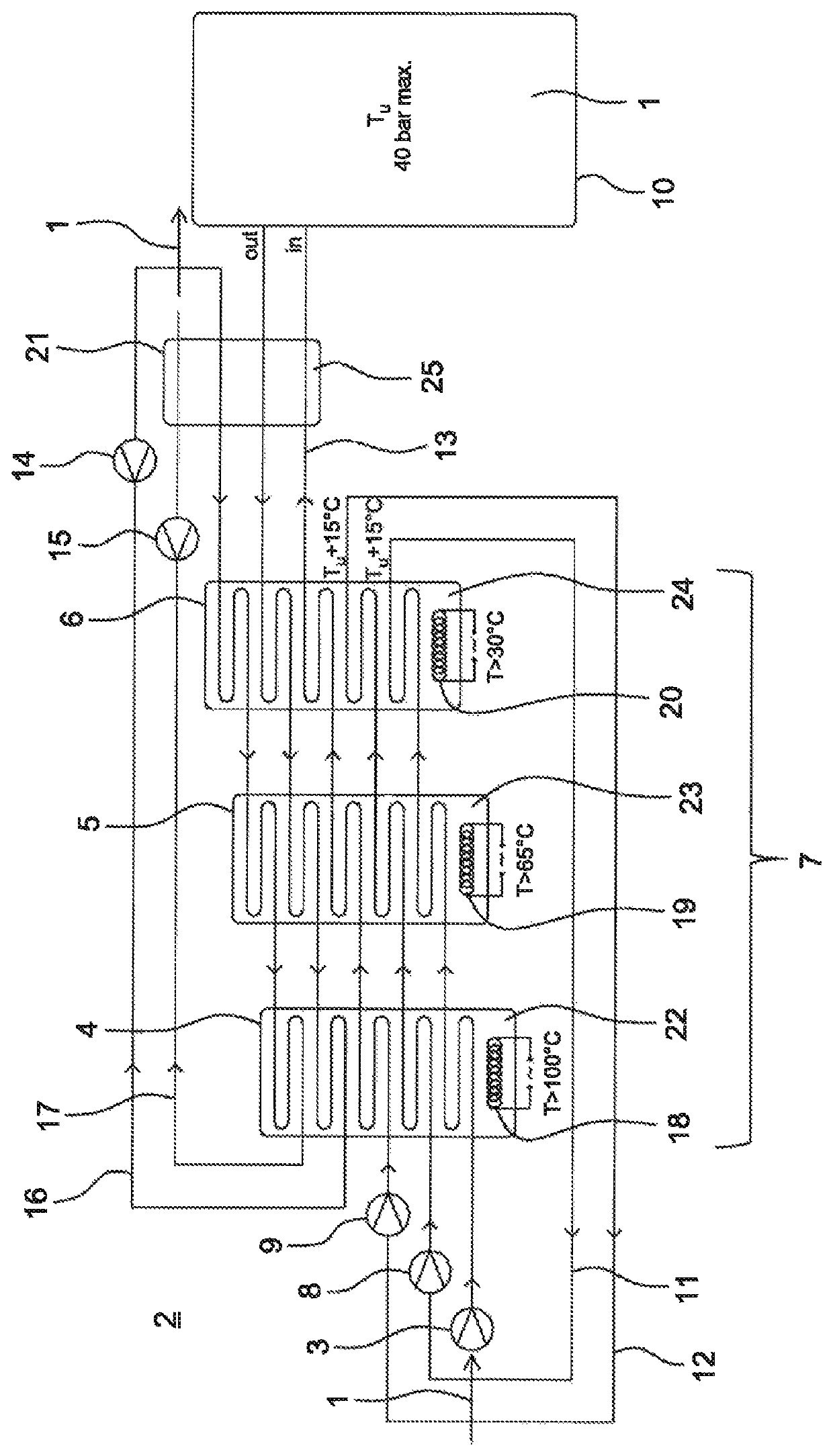Device and method for temporarily storing gas and heat
a technology for temporary storage and gas, applied in indirect heat exchangers, machines/engines, lighting and heating apparatus, etc., can solve the problems of inconvenient and inconvenient dynamic methods such as co-current or counter-current methods, and the inability to achieve adiabatic insulation of giant high-pressure vessels, and achieve the effect of increasing the effective pressur
- Summary
- Abstract
- Description
- Claims
- Application Information
AI Technical Summary
Benefits of technology
Problems solved by technology
Method used
Image
Examples
Embodiment Construction
[0077]FIG. 1 shows a schematic representation of a device according to an embodiment of the invention, in which air 1 from the surroundings 2 is compressed by means of a first compressor 3 and then passes in succession through a plurality of heat accumulators 4, 5 and 6 of a heat accumulator arrangement 7. After this the air 1 is additionally compressed by a second compressor 8 and then passes in succession through the heat accumulators 4, 5 and 6. The compressed air is then compressed further by a third compressor 9 and next passes in succession through the heat accumulators 4, 5 and 6. The air 1 is then stored in a pressure vessel 10. The respective flow direction of the air 1 is represented by arrows and arrow heads. The compressors 3, 8 and 9 are also termed compressors.
[0078]A gas flow path is connected downstream of each compressor, which together with the respective compressor forms a compression stage. Thus, the gas flow path 11 is connected downstream of the compressor 3, t...
PUM
 Login to View More
Login to View More Abstract
Description
Claims
Application Information
 Login to View More
Login to View More - R&D
- Intellectual Property
- Life Sciences
- Materials
- Tech Scout
- Unparalleled Data Quality
- Higher Quality Content
- 60% Fewer Hallucinations
Browse by: Latest US Patents, China's latest patents, Technical Efficacy Thesaurus, Application Domain, Technology Topic, Popular Technical Reports.
© 2025 PatSnap. All rights reserved.Legal|Privacy policy|Modern Slavery Act Transparency Statement|Sitemap|About US| Contact US: help@patsnap.com

